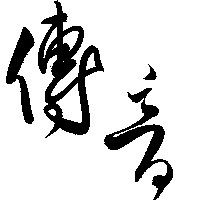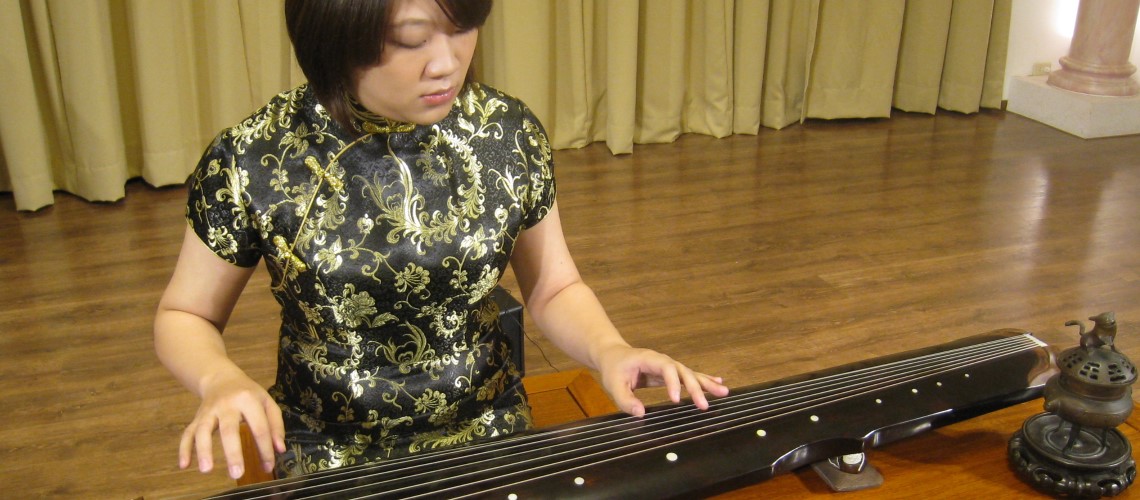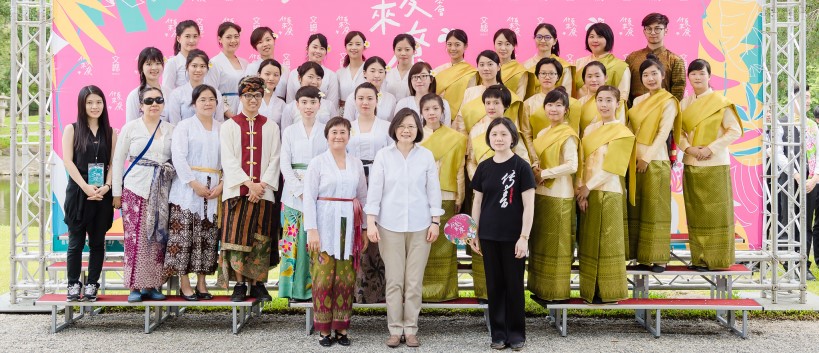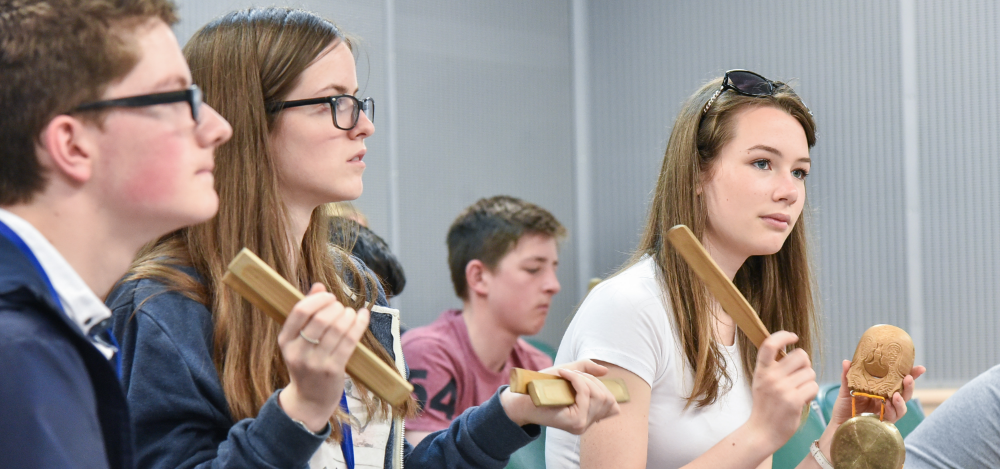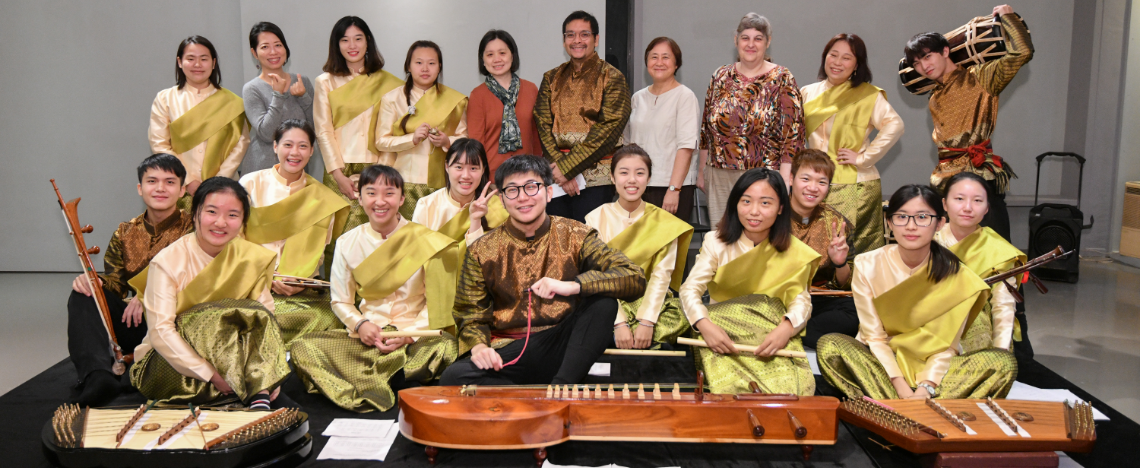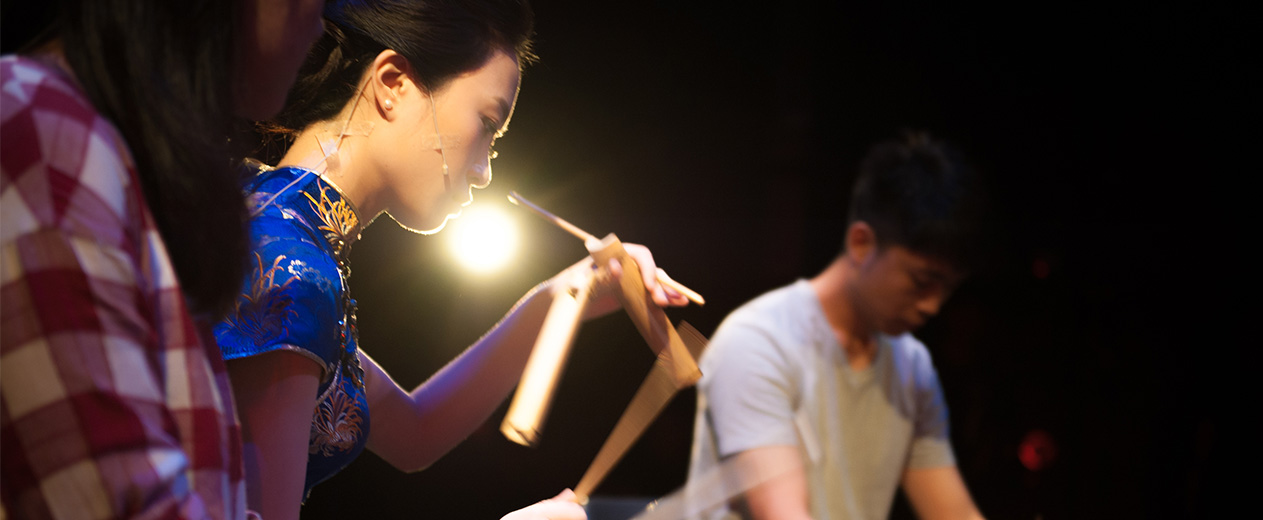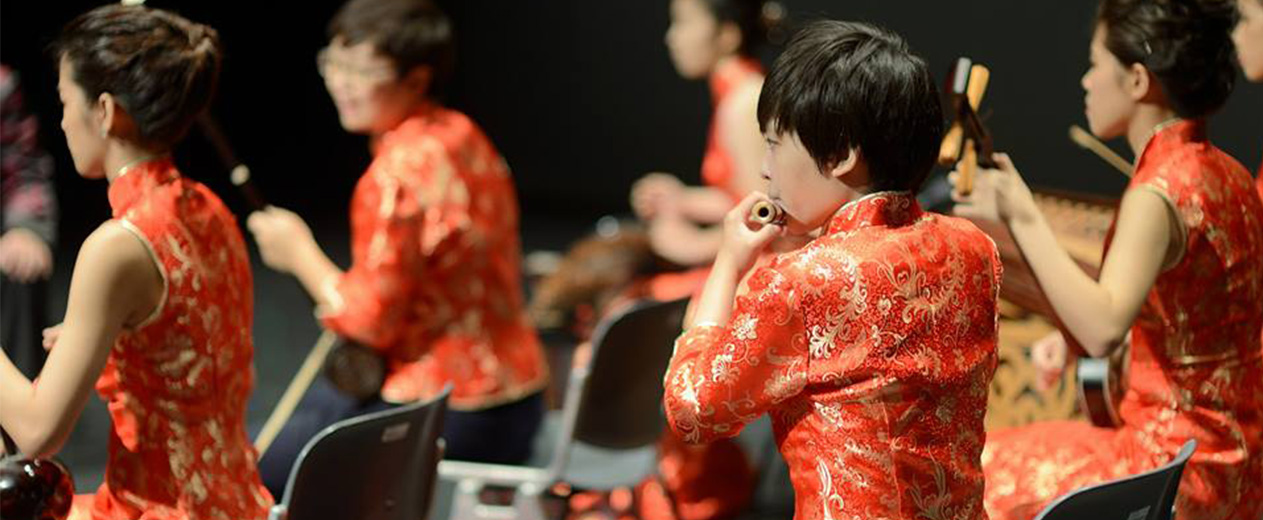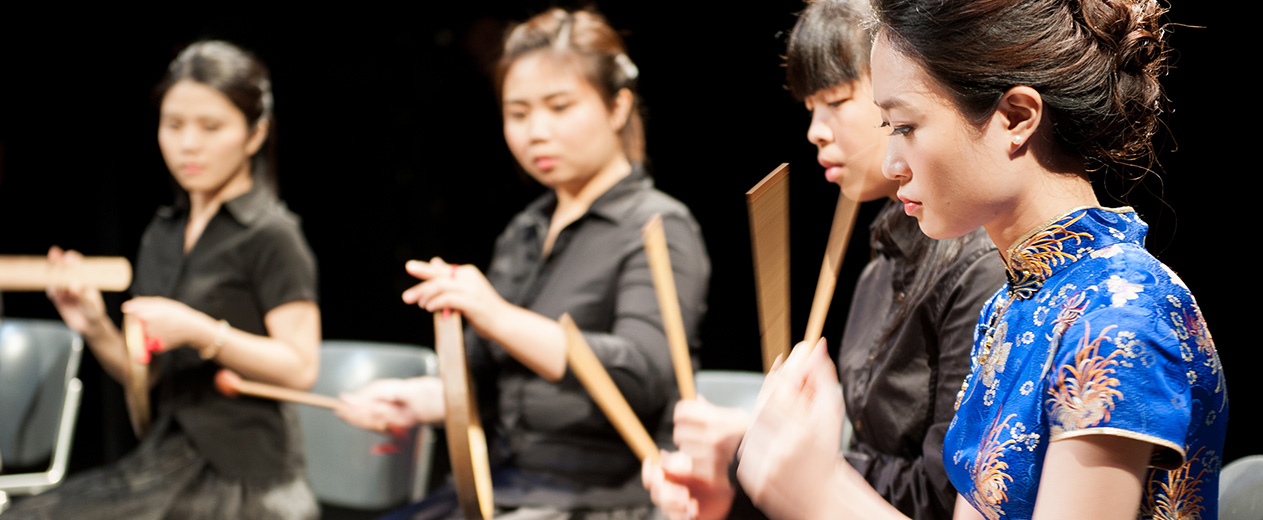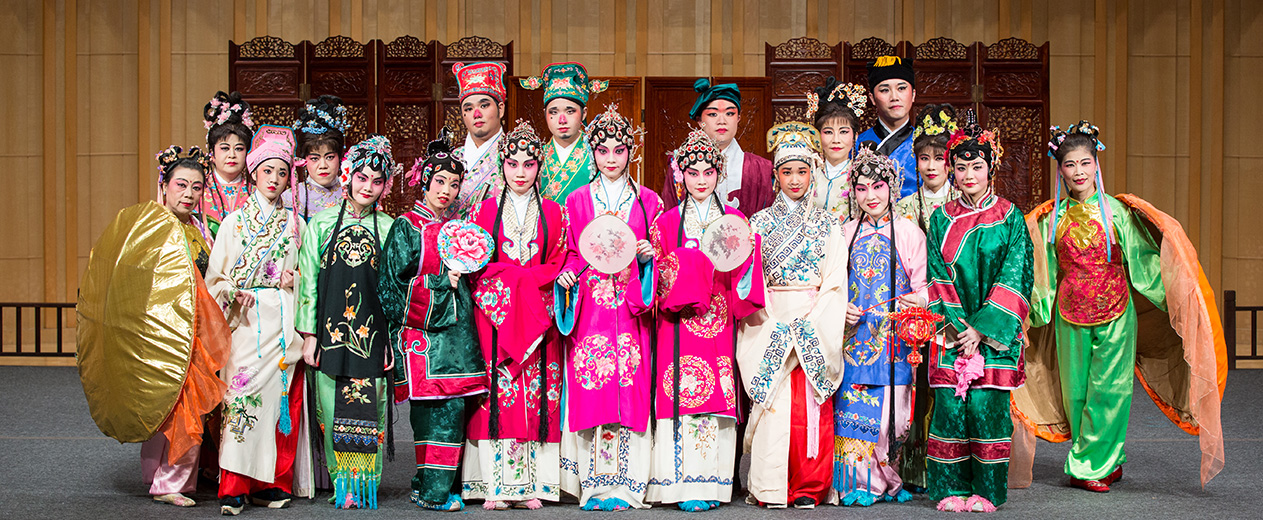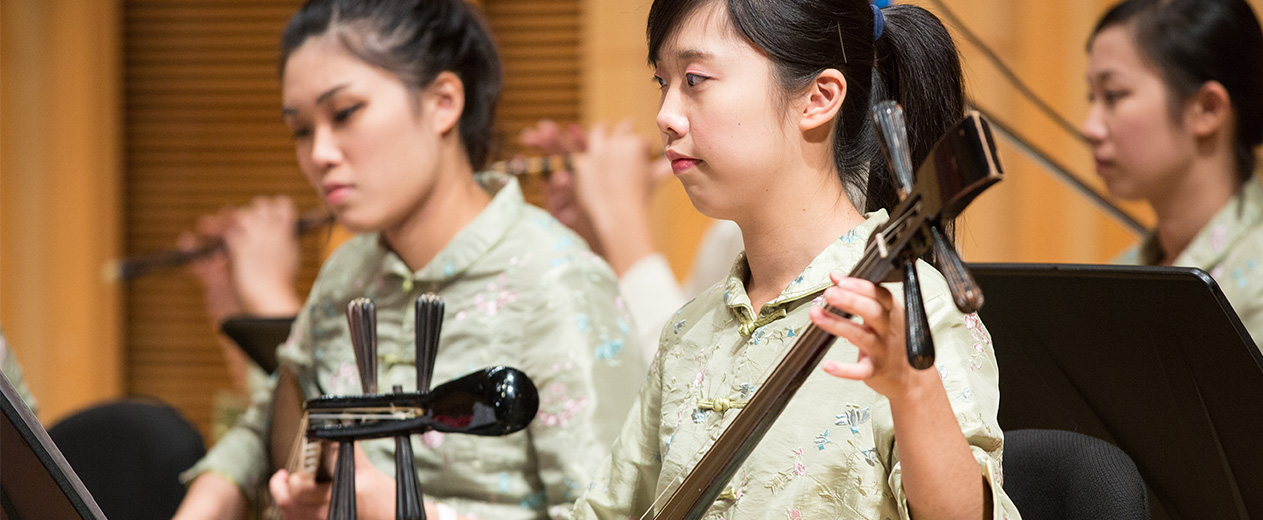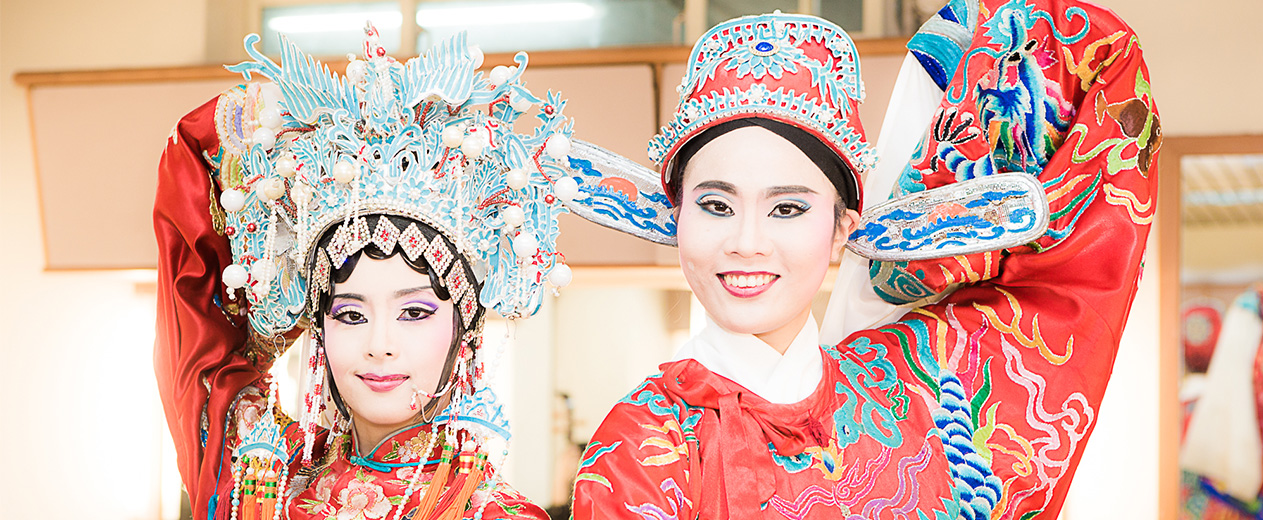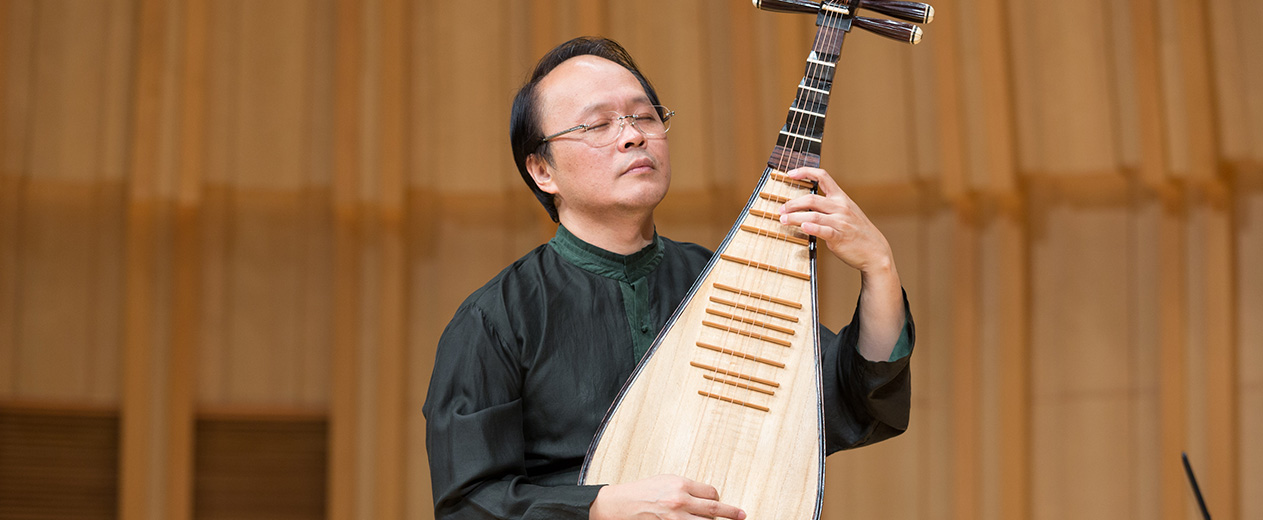View count:
34658
Pipa Focus

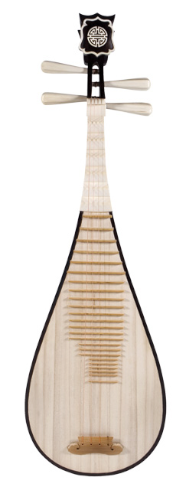 The pipa (琵琶) is a very popular musical instrument in Taiwan and China. It was first named “pi-pa” (枇杷); according to The Dictionary of Names of Musical Instruments by Liu Hsi (劉熙) of the East Han dynasty, this means “pluck out” and “pluck in”.
The pipa (琵琶) is a very popular musical instrument in Taiwan and China. It was first named “pi-pa” (枇杷); according to The Dictionary of Names of Musical Instruments by Liu Hsi (劉熙) of the East Han dynasty, this means “pluck out” and “pluck in”.Pipa was a collective name of any lute regardless of its size, shape, material, number of strings or how it was played during the Chin, Han and Tang dynasties. It was not until the Sung dynasty that pipa became an exclusive name referring to the pear-shaped, curved-neck lute.
During the Chin dynasty (221-207 B.C.) a round-shaped, straight-necked lute was created. It had two-sided leather binding like a drum and was played vertically with the fingers. It was called the xiantao (string drum, 弦鼗), and also referred to as pipa. Around 105 B.C. a new pipa was created. It was made of wood and had a straight neck, round body, four strings and twelve frets. It was later renamed Chin pipa. A famous literati, Ruan Hsien (阮咸) of the “Seven Sages Under the Bamboo”, could play this instrument very well. Therefore, the Chin pipa was also referred to as ruanhsien(阮咸) or ruan(阮).
Around 350 A.D. when cultural exchanges were happening through the Silk Road, there were two kinds of pipas imported to northern China. Both were pear-shaped, curved-necks, four-bridges, and were held horizontally. One of them had four-strings and was plucked with a plectrum, the other had five-strings and was plucked with the fingers. They were brought to southern China after 551 A. D. These pipas had been adapted for singing and dance and were popular during the Sui and Tang dynasties. The pipa later on became one of the most important instruments of its time especially as the lead instrument of the ensemble of Tang’s “Grand Music” (大曲).
From the Tang and Sung dynasties the pipa evolved upon the foundation of the above two instruments becoming an instrument having four strings, four bridges, nine to thirteen frets and plucked with the fingers or artificial nails.
The way of playing the pipa also evolved along with its development. While the curved-neck pipa from the Silk Road had been played with a plectrum for a long time, the ruan had a long history of hand-plucked performances. During the North Wei dynasty these two ways of playing were merged to hand techniques. Many scholars argue that the pipa did not become a hand-plucked lute until 627-649 A.D., however, the stone carvings of the Yungang Cave (雲岡石窟) dating from 460-494 A.D. show many images of hand-plucked pipa players. This means that hand-plucked performances must have begun even earlier than the stone carvings of Yungang Cave.
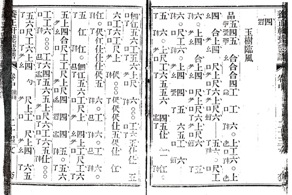 After the Sung and Yuan dynasties the pipa evolved into a hand-plucked instrument having fourteen frets and had a better shape, range of pitches, and performance sound effects. The modern pipa has an even better resonance box for a louder dynamic range. It uses steel or nylon strings instead of silk strings for a brighter sound and has six bridges and twenty-five frets for a larger range of pitches and well-tempered tuning for modulation among the twelve keys.
After the Sung and Yuan dynasties the pipa evolved into a hand-plucked instrument having fourteen frets and had a better shape, range of pitches, and performance sound effects. The modern pipa has an even better resonance box for a louder dynamic range. It uses steel or nylon strings instead of silk strings for a brighter sound and has six bridges and twenty-five frets for a larger range of pitches and well-tempered tuning for modulation among the twelve keys. In addition to solo repertoire, the pipa can also accompany singing, dancing or drama as well as be a member of various kinds of ensembles.


